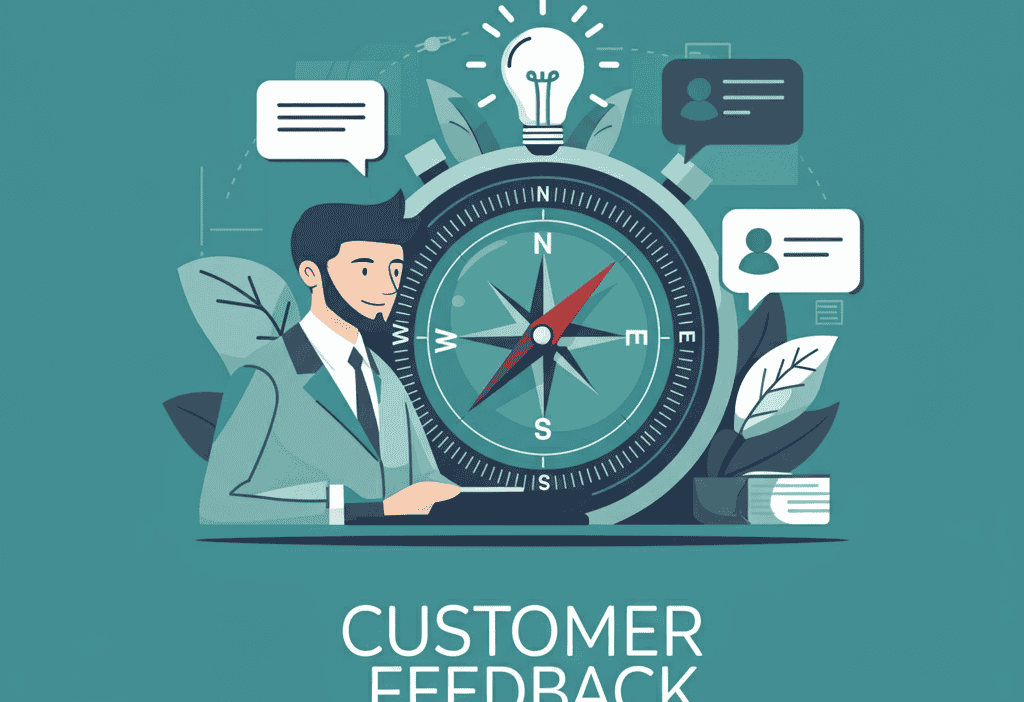Customer feedback isn’t just another item on your business checklist—it’s the compass that guides every decision from product development to customer service improvements. Yet many companies collect feedback haphazardly, missing the strategic opportunity to transform customer insights into competitive advantages.
A well-crafted customer feedback strategy does more than gather opinions. It creates a systematic approach to understanding your customers’ needs, pain points, and desires, then translates those insights into actionable business improvements. Companies that excel at feedback collection and implementation see higher customer retention rates, increased revenue, and stronger market positioning.
This guide will walk you through building a comprehensive customer feedback strategy that not only captures valuable insights but also creates a culture of continuous improvement within your organization.
Understanding the Foundation of Effective Feedback Strategy
Before diving into collection methods and analysis techniques, you need to establish clear objectives for your feedback program. What specific business goals will customer insights help you achieve? Are you looking to improve product features, enhance customer service, or identify new market opportunities?
Your feedback strategy should align with broader business objectives. If customer retention is a priority, focus on understanding why customers leave and what would make them stay. For companies launching new products, feedback should center on market fit and user experience.
Consider your customer lifecycle when planning feedback touchpoints. New customers have different perspectives from long-term users, and their feedback serves different strategic purposes. Recent purchasers can provide insights about your onboarding process, while loyal customers offer valuable perspectives on product evolution and competitive positioning.
Choosing the Right Feedback Collection Methods

Different feedback collection methods serve different purposes and reach different segments of your customer base. Surveys remain popular because they’re scalable and provide quantitative data, but they work best when you know what questions to ask.
Email surveys can reach large audiences and provide structured data, making them ideal for measuring customer satisfaction scores or gathering specific product feedback. Keep surveys short and focused—customers are more likely to complete a five-question survey than a twenty-question one.
Direct interviews and focus groups offer deeper insights but require more resources. These methods excel when you need to understand the “why” behind customer behavior or explore complex issues that surveys can’t capture. Phone interviews work well for B2B companies, while video calls can provide additional context through visual cues.
Social media monitoring captures unsolicited feedback and provides insights into how customers naturally discuss your brand. This method reveals genuine sentiment and can identify issues before they become widespread problems. Monitor mentions across platforms, not just your own social media accounts.
Customer support interactions represent an untapped goldmine of feedback. Support tickets, chat logs, and call recordings contain detailed information about customer frustrations and suggestions. Analyze these systematically to identify recurring themes and improvement opportunities.
Creating Effective Feedback Questions
The quality of your feedback depends heavily on how you ask questions. Avoid leading questions that push customers toward specific answers. Instead of asking “How much did you love our new feature?” try “How would you rate your experience with our new feature?”
Mix question types to gather both quantitative and qualitative data. Rating scales provide measurable data that’s easy to track over time, while open-ended questions reveal specific issues and suggestions you might not have considered.
Context matters when crafting questions. Ask about recent, specific experiences rather than general impressions. “How was your checkout process today?” generates more actionable feedback than “How do you feel about our website?”
Consider the timing of your questions carefully. Asking for feedback immediately after a purchase captures fresh impressions, while waiting a few weeks allows customers to evaluate their overall satisfaction with the product or service.
Building a Systematic Analysis Process
Collecting feedback is only the first step—the real value comes from analyzing and acting on what you learn. Start by monitoring customer feedback consistently to detect trends, recurring issues, and emerging opportunities. Establish clear processes for reviewing feedback data and identifying patterns that align with your strategic goals.
Categorize feedback into themes to identify the most common issues and suggestions. Use tagging systems to track different types of feedback, such as product features, customer service, pricing, or user experience. This organization makes it easier to spot trends and prioritize improvements.
Quantify qualitative feedback when possible. If multiple customers mention the same issue, track how frequently it occurs. This data helps prioritize which problems to address first and provides baseline measurements for improvement efforts.
Create regular reporting cycles to share feedback insights across your organization. Monthly feedback summaries can highlight trends and success stories, while quarterly deep-dives can inform strategic planning and resource allocation.
Implementing Changes Based on Customer Input
The most sophisticated feedback collection system means nothing if insights don’t drive action. Establish clear processes for translating feedback into business improvements.
Prioritize changes based on impact and feasibility. Quick wins that address common complaints can demonstrate responsiveness to customers while building internal momentum for larger initiatives. Document what changes you make and why, creating accountability for follow-through.
Communicate changes back to customers who provided feedback. When customers see their suggestions implemented, they’re more likely to continue providing input and feel valued by your organization. This communication also shows other customers that you take feedback seriously.
Track the impact of changes you make based on customer feedback. Did updating your checkout process reduce cart abandonment? Has improved customer service training led to higher satisfaction scores? These measurements validate your feedback strategy and justify continued investment.
Creating a Feedback-Driven Culture
Sustainable feedback strategies require buy-in across your organization. Share customer insights regularly with all teams, not just those directly involved in customer-facing roles. Product developers, marketers, and executives all benefit from understanding customer perspectives.
Train employees to actively seek and respond to customer feedback in their daily interactions. Customer service representatives should be equipped to escalate valuable insights, while sales teams can gather feedback about competitive positioning and market needs.
Celebrate wins that result from customer feedback implementation. When a product improvement based on customer suggestions drives increased sales or satisfaction, share that success story organization-wide. These examples reinforce the value of listening to customers and encourage continued participation in feedback initiatives.
Measuring the Success of Your Feedback Strategy
Effective feedback strategies require ongoing measurement and refinement. Track both the quantity and quality of feedback you receive. Are response rates to surveys declining? Are you gathering insights that lead to meaningful changes?
Monitor customer satisfaction metrics over time to gauge whether your feedback-driven improvements are having the desired impact. Net Promoter Score, Customer Satisfaction Score, and Customer Effort Score all provide valuable benchmarks for measuring progress.
Measure the business impact of changes made based on customer feedback. Connect improvements to concrete outcomes like reduced churn, increased revenue, or higher customer lifetime value. This data demonstrates ROI and supports continued investment in feedback programs.
Turning Customer Insights into Competitive Advantage
A well-executed customer feedback strategy transforms your relationship with customers from transactional to collaborative. Customers become partners in improving your business, creating stronger loyalty and more relevant products and services.
Start building your feedback strategy by identifying one area where customer insights could drive meaningful improvement. Choose collection methods that match your resources and customer preferences, then commit to acting on what you learn.
Remember that feedback strategies evolve over time. What works for your business today may need adjustment as you grow and your customer base changes. Regular evaluation and refinement ensure your feedback strategy continues delivering value for both your business and your customers.
The companies that thrive understand that customer feedback isn’t about confirming what you already know—it’s about discovering what you don’t. Build systems that capture those discoveries, and you’ll build a business that consistently exceeds customer expectations.
Learn more about: How to Manage Online Reviews Effectively





